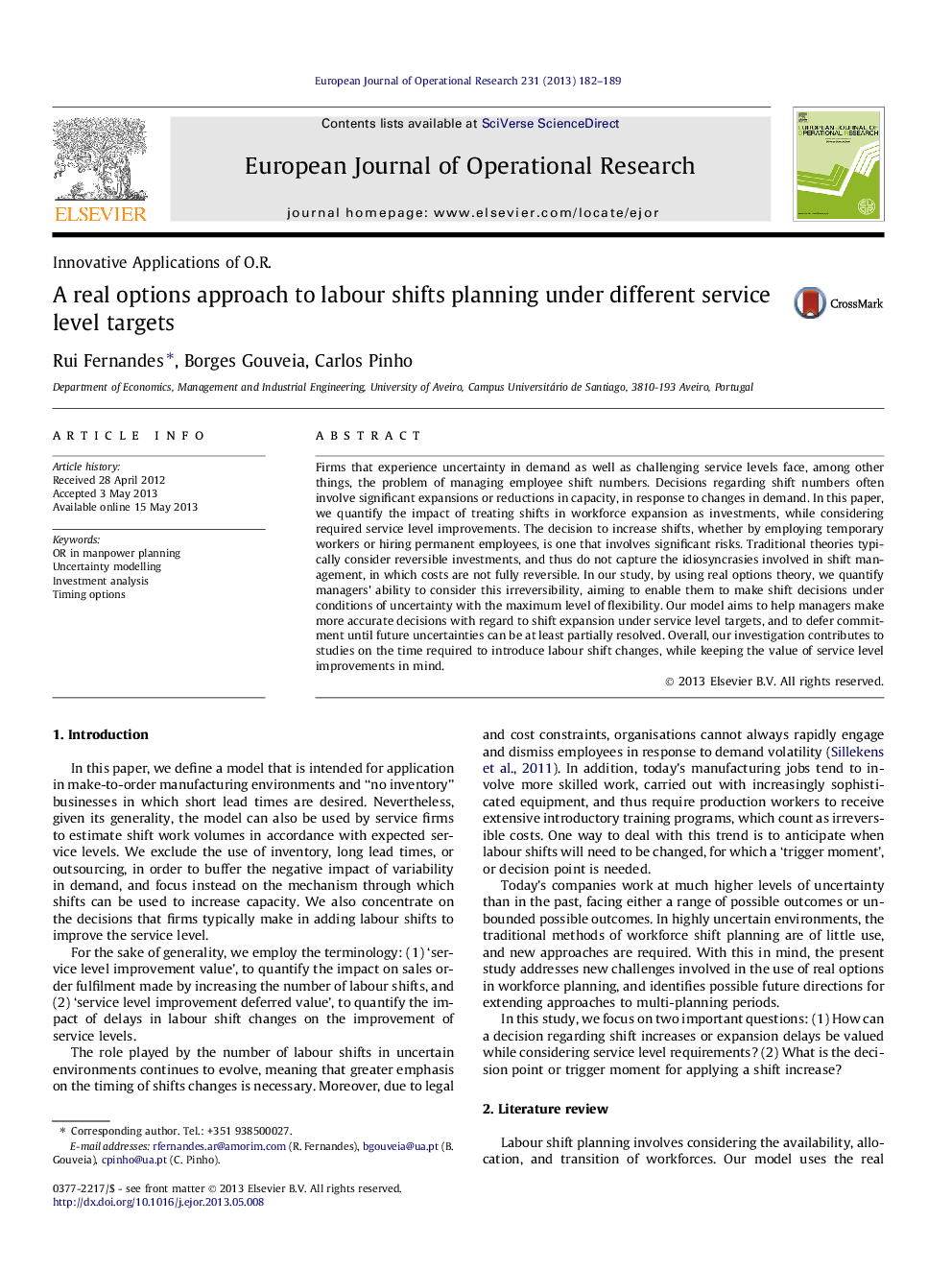| Article ID | Journal | Published Year | Pages | File Type |
|---|---|---|---|---|
| 479930 | European Journal of Operational Research | 2013 | 8 Pages |
•Workforce planning, under conditions of market uncertainty, is reviewed.•Decisions regarding workforce shifts, targeting different service levels, are discussed.•A real options model, tailored to the contextual need, is proposed.•The optimal timing is considered as an important input for workforce shifts expansion.•The preparation period for workforce training/adaptation is modelled.
Firms that experience uncertainty in demand as well as challenging service levels face, among other things, the problem of managing employee shift numbers. Decisions regarding shift numbers often involve significant expansions or reductions in capacity, in response to changes in demand. In this paper, we quantify the impact of treating shifts in workforce expansion as investments, while considering required service level improvements. The decision to increase shifts, whether by employing temporary workers or hiring permanent employees, is one that involves significant risks. Traditional theories typically consider reversible investments, and thus do not capture the idiosyncrasies involved in shift management, in which costs are not fully reversible. In our study, by using real options theory, we quantify managers’ ability to consider this irreversibility, aiming to enable them to make shift decisions under conditions of uncertainty with the maximum level of flexibility. Our model aims to help managers make more accurate decisions with regard to shift expansion under service level targets, and to defer commitment until future uncertainties can be at least partially resolved. Overall, our investigation contributes to studies on the time required to introduce labour shift changes, while keeping the value of service level improvements in mind.
